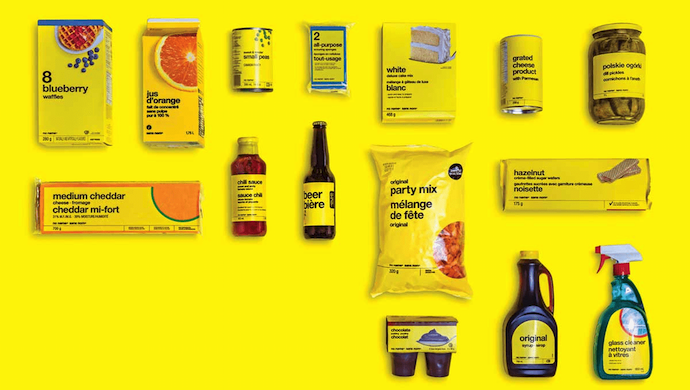
Akshay Bajaj of SIG and I talked about the concept of Absolute Pricing Authority, the Costco model, and its relevance for emerging markets recently. I would like to share our conversation with the community at large.
So let us start with understanding what “brands” are: They are mental associations meant to increase conversions behind a job to be done and a particular action.
Healthy living? Saladstop. Need to run? Nike. E-commerce payments? Stripe.
Brands are always associated with a job to be done, and typically focus on quality (i.e. we are the best quality for the job to be done).
Affordability sometimes comes into the picture in that you associate a particular brand with affordability (i.e. Walmart), but what if we take the affordability branding to the extreme?
What if we want to build a brand that tries to tackle the job of ‘confidence in the lowest possible price of the market’ –which is defined as the brand with “Absolute Pricing Authority”. Costco Founder and former CEO Jim Sinegal mentioned in a recent lecture that he prides Costco on having the concept. It means customers can be absolutely sure that Costco has the lowest prices anywhere. There’s only one company at a time that can deliver on this promise!
When consumers in emerging markets shop, they are generally first and foremost optimising for cost. Ease of mind that the platform they are shopping in has the absolute best bargain for them prevents leakage through price checking/comparison, and increases revisit, consumer mindshare and conversion rates.
As noted by Micah Browns, a branding expert, consumers don’t want to work to discern value. They want it to be immediately apparent.
We are then not optimising for ‘everyday brand pricing’; we are optimising for total confidence of Absolute Pricing Authority — to the point that I do not need to attempt to look elsewhere.
Building Absolute Pricing Authority for a set of key SKUs can help to drive volume will allow you to be the gatekeeper of that SKU in that market. With that brand trust and SKU volumes, it provides companies with a wedge to tackle each SKU category one SKU at a time.
Amazon, however, did the opposite. They have spent years building one of the most powerful discount brands in the world. So powerful, in fact, that we don’t even remember the products themselves; only that they came from Amazon. To consumers, cheap + convenient = Amazon, according to Adam Keesling.
The Absolute Pricing Authority framework is particularly exciting for emerging markets, which are extremely cost-sensitive. Brand building for quality or luxury takes a back seat to price. This is not new — supermarkets have a few key SKUs which are loss-leaders, typically daily essentials sold at or below cost that help promote recurring consumer purchases, and cross-selling through other higher-margin products.
An interesting and important side-point to Absolute Pricing Authority is the SKU concentration. Building Absolute Pricing Authority has the effect of maintaining discipline on SKU growth, restricting adding SKUs.
I have not been able to find much research out there about Revenue:SKU ratios for top performing marketplaces and retailers, but have a strong suspicion that as e-commerce becomes more and more verticalised, that Revenue:SKU ratios will become a key metric for emerging vertical marketplaces to keep an eye on.
This was very different from the early days of general e-commerce marketplaces where some marketplaces optimized for SKU count (at all cost) and it was a key metric for GMV growth.
This can be seen in the case of Muji, a popular Japanese retailer, an abbreviation for ‘Mujirushi Ryōhin’ (which translates to “no brand, quality products”). Starting with only an essential of nine household items and 31 food products, the retailer now has over 7,000 SKUs and has expanded into apparel, travel, electronics, health and beauty, stationery, and more.
With five or six super-wide aisles, Aldi only stocks around 1,400 items — compared to around 40,000 at traditional supermarkets and more than 100,000 at Walmart supercentres.
There is also Dealshare, an Indian Matrix-backed Indian Social Commerce platform. With an average of 1,000 stock-keeping units (SKU) across different categories, DealShare delivers about 25,000 orders daily. At present, it has around 1,000 manufacturers and suppliers, of which 70 per cent are regional or local.
Anecdotally, most marketplaces adopting this philosophy seem to cap out at 5,000 to 7,000 SKUs.
Absolute Pricing Authority is not just about blindly burning money on price wars or simply building private-label products. A Forbes autopsy of Brandless noted that, unlike Muji which promoted its cheap prices because of its deep horizontal supply-chain, Brandless’ simply took stock from the same suppliers that supplied their competitors and lowered prices.
For a startup with limited resources, this indicates a very heavy vertical focus on key SKUs for key consumer segments, identifying key supply chain inefficiencies and building a roadmap for domination within those segments.
Although a fairly new concept in Asia, I have already come across multiple traditional verticalised Costco-models.
–
Editor’s note: e27 aims to foster thought leadership by publishing contributions from the community. Become a thought leader in the community and share your opinions or ideas and earn a byline by submitting a post.
Join our e27 Telegram group, FB community or like the e27 Facebook page
The post Why Absolute Pricing Authority and Costco branding concept are good for emerging markets appeared first on e27.

